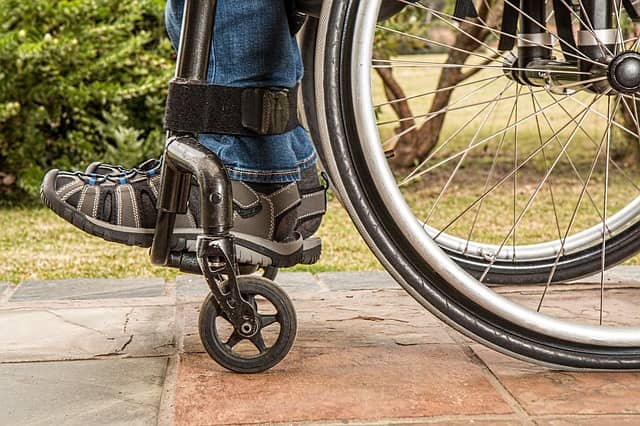Written by Summer Wong

Graham loved to jet down the highway on his motorcycle, exhilarated by the exciting feeling of speed. He travelled, enjoyed fishing, went on camping trips, and even owned a successful electrical contracting business that collected an annual revenue of an astounding amount of $128,000 a year. Graham was only twenty-six years old. One morning, a severe motorcycle accident shattered his spinal cord, and from then on he could no longer do all the things that he loved.
Quadriplegia is a spinal cord injury that renders everything from your neck down completely paralyzed. The spinal cord is an essential part of your central nervous system, and it is the only medium through which the brain can communicate with the rest of your body. When damaged, depending on the severity of the injury, movement in the arms and the legs could become useless. Because damage to the spinal cord is impossible to repair, there has insofar been no effective treatment to reverse the damage. Surgery would be one’s best bet to combat the further deterioration of the spinal cord and relieve tension from the spine due to shattered bones. However, despite the enormous advancement in surgery as a way to solve medical problems, it is ineffective in treating quadriplegia as there is no known method to repair dead nerves [1].
Those who are affected by paralysis suffer from a myriad of symptoms that require constant medical attention. Individuals with quadriplegia lose their ability to feel, whether it is the sun’s rays, the ice cold weather, or a person’s touch. There is also a loss of bowel or bladder control, which could lead to urinary tract infections and/or constipation. Occasionally, one may experience intense muscle spasms and have difficulty breathing; have pressure sores, blood clots due to decreased blood circulation, or a deadly autonomic dysreflexia, a threatening clinical syndrome that results in uncontrolled hypertension [3].
Paralysis is difficult to cure. So far, there is no cure. Unlike skin, muscle, or liver cells, nerve cells are one of the only cells in the body that cannot be reproduced. However, despite the bleak predicament quadriplegia individuals face, one must consider that medical treatments are improving every day.
There is hope that a quadriplegic individual could slowly regain muscle movement through physiotherapy. To prevent muscles from deteriorating, a series of progressive exercises help patients regain control over their arms and legs to a certain extent. Physicians have invented methods of incorporating metal rods and screws to help improve movement. Occupational therapy will help victims discover ways of performing daily activities by themselves. To improve oratory precision, patients undergo speech therapy. Unfortunately, quadriplegics require a regular drug protocol that will keep their symptoms in check. Finally, because pressure sores are one of the most common symptoms among quadriplegics, a lot of effort is dedicated to minimizing pain as much as possible. Current inventions to aid quadriplegics include specialized wheelchairs, seating systems and mattresses [2].
Advancing the potential solutions for quadriplegia benefits more than simply the victims of paralysis. Victims of brain injuries, in general, can benefit from this research and from the subsequent treatments. Conditions such as Alzheimer’s and Huntington’s Disease could be treated as a result of research into quadriplegia. Stem cells have the opportunity to create new nerve cells and thus provide treatment for currently untreatable conditions [4]. As research advances, victims like Graham will be able to do the things they love once again.
References:
1. Desert, Jean-Francois. “Spinal Cord Injury: Paraplegic and Quadriplegic Injuries.” Home Page. International Encyclopedia of Rehabilitation, n.d. Web. 27 May 2016.
2. “Quadriplegia Treatment.” Quadriplegia Treatment. Injury Information, n.d. Web. 27 May 2016.
3. Stephenson, Ryan O. “Autonomic Dysreflexia in Spinal Cord Injury.” : Overview, Pathophysiology, Causes of Autonomic Dysreflexia. ., 25 June 2015. Web. 27 May 2016.
4. Williams, Ivanna. “Quadriplegic Veteran to Receive Stem Cell Treatment.” Spinal Cord Injury Zone. KSWO, 8 Jan. 2015. Web. 27 May 2016.